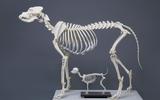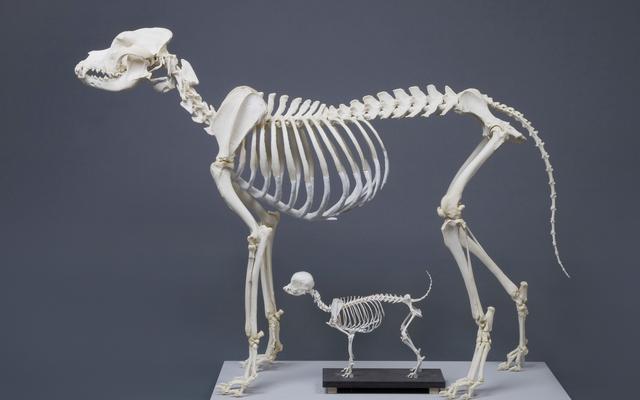NMBE is home to the largest dog collection
In a recent study published in the science journal “Nature” involving the Natural History Museum of Bern (NMBE), researchers analysed the genome of 72 wolves that lived up to 100,000 years ago in Europe, Siberia and North America. Among the materials analysed was a wolf’s skull from the NMBE’s own collection; originating from the Bernese Oberland, experts were able to date it back to the Mesolithic Age. Wolves were likewise found far and wide during the Ice Age and lived as interconnected populations. The international team of researchers compared these wolf genomes to those of early and modern dogs. This work involved analysing the dog collection at the NMBE, which may well be the largest scientific dog collection in the world.
The results of this new study show that the majority of dogs are most similar to the wolves native to Siberia during the Ice Age. This is also the time when humans started to domesticate dogs. The researchers also found that many dogs – especially those from Africa, the Middle East and Europe – had genetic material from a western, i.e. European, wolf population.
Other potential forms of domestication
Based on the current data, however, it was not possible to definitively prove whether these genetic traces from wolves in the West point to a second, independent phase of domestication of dogs in Europe. An alternative scenario is that already domesticated dogs from Asia were brought to Europe by humans and cross-bred with non-domesticated wolves. As a result, the previous assumption that dogs may have been domesticated multiple times could be neither proven nor refuted.
For further information, please contact André Rehazek at andre.rehazek@nmbe.ch or Stefan Hertwig, Head of Vertebrates at NMBE: stefan.hertwig@nmbe.ch
Publication date: 7.6.22



